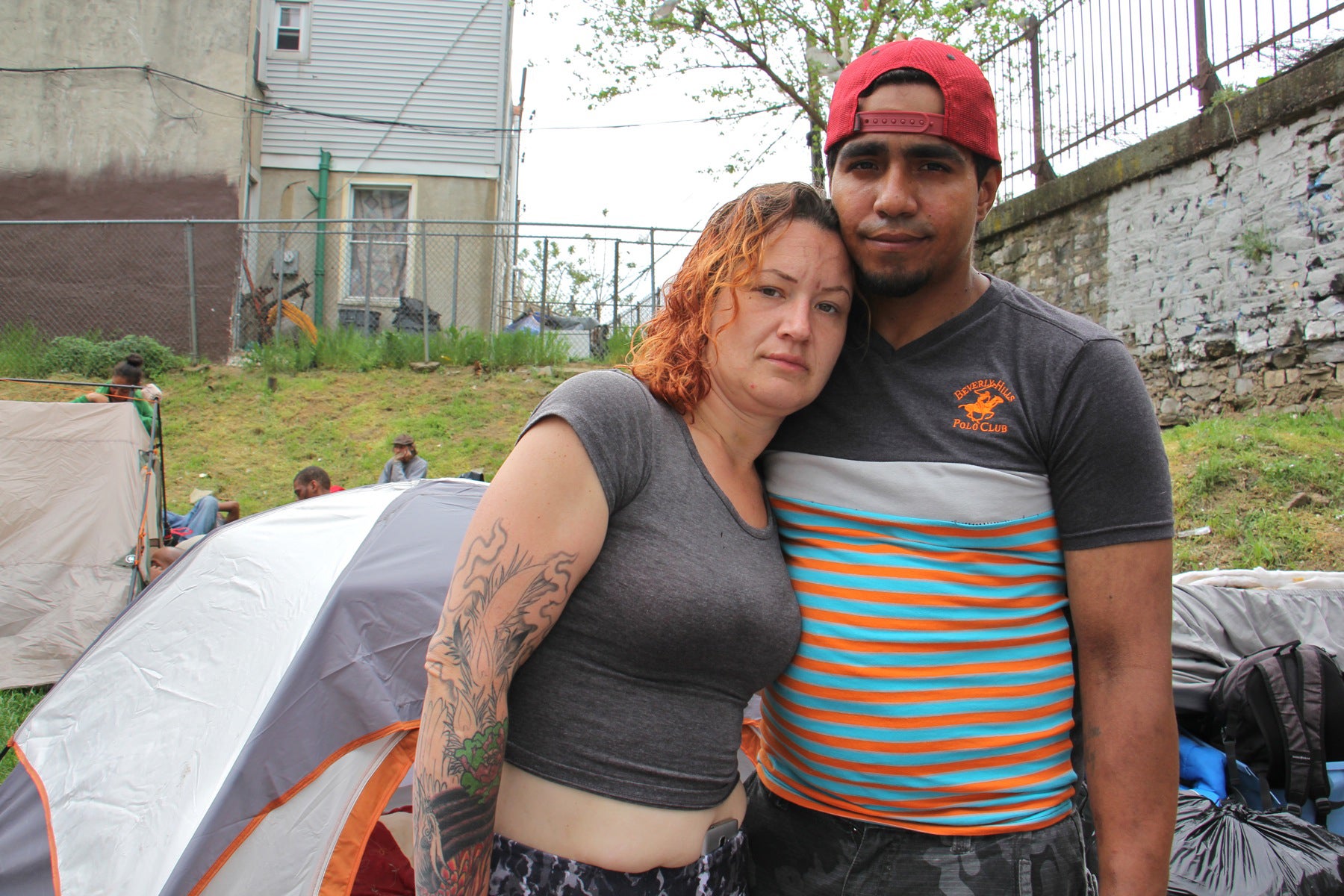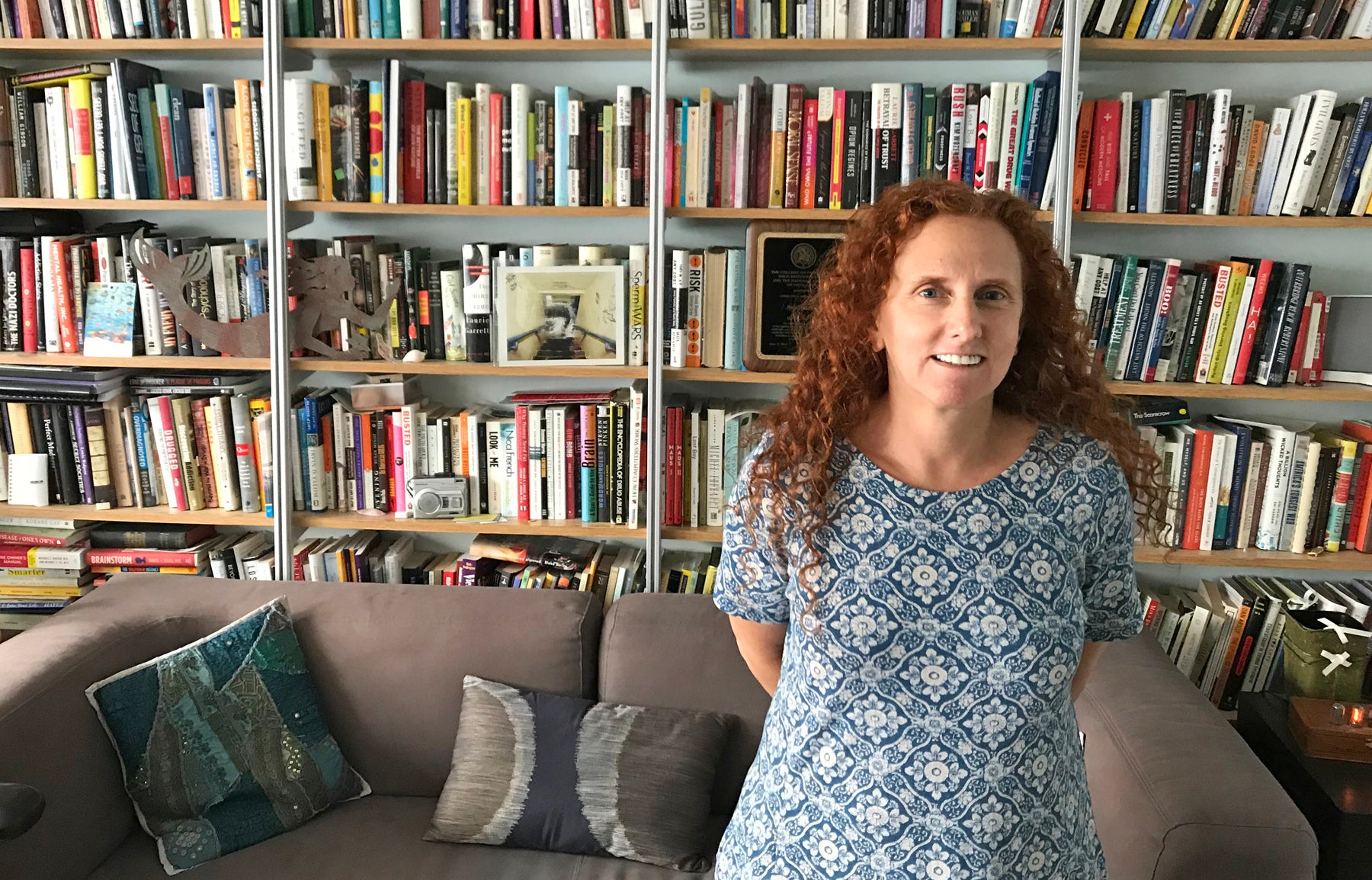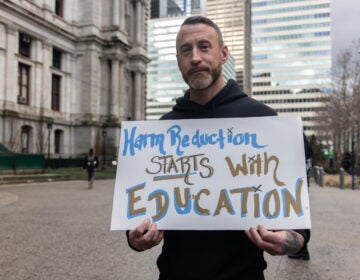What makes addiction a disease?
Science calls addiction a "brain disease," but critics say that label fails to show that addiction is a learning problem with roots in both biology and behavior.
Listen 12:46
Philadelphia's Kensington neighborhood has been called “ground zero” in the battle against opioid addiction. (Kimberly Paynter/WHYY)
Philadelphia’s Kensington neighborhood has been hit hard by the national opioid crisis that’s killed tens of thousands of Americans in recent years.
One morning in July, here’s the scene outside a neighborhood train station: While an ambulance winds its way through traffic nearby, people sit on the stairs with their heads buried in their arms. Others hustle for spare change or hawk “works” — street slang for a syringe. Several of the drug users stand stooped, their bodies droop then jerk back up again in the rhythm of a heroin nod.
At this spot, less than a week earlier, six people overdosed in the span of 15 minutes.
“It’s like watching TV,” said local resident Cano Gomez. “You stand here and it’s like watching a whole reality show, a one-hour reality show, to stand out here. I’m telling you man, it’s crazy.”
For people addicted on the streets, overdosing is just one worry on a long list of hardships. Many have lost their homes, jobs and families. They’ve seen friends die and get locked up. And when they try to explain how all of this happened, many say they are sick.
“I’m a freakin’ addict, I got a disease man,” said Salvatore Gonzalez, Jr., who’d been living in a Philadelphia homeless encampment.

No matter who is talking about addiction these days, chances are they are using that term: “disease.”
From former President Barack Obama, to former New Jersey Governor Chris Christie, to President Donald Trump, politicians on both sides of the aisle now talk about addiction as a public health issue.
“This epidemic is a national health emergency,” Trump declared less than a year into his presidency.
There’s a growing consensus that addiction is a disease of the brain that requires medical treatment. Among consensus are people in recovery, their advocates, and police.
It feels like a far cry from the days when conventional wisdom viewed addiction as a moral failing that called for criminal punishment.
But calling addiction a brain disease, and not a bad life choice, is still a fairly new concept — one that has been built up over the past few decades by researchers toiling to understand how addiction affects the brain. As that view gains wider acceptance, some critics are challenging whether it’s really appropriate to call addiction a “brain disease.”
A rewired reward system
Charles O’Brien, a professor of psychiatry at the University of Pennsylvania, has been doing research on addiction since the 1960s. He says back then, psychiatrists tended to view drug addicts as, essentially, psychopaths.
“It was related to antisocial personality, and that’s not really true,” O’Brien said.
Researchers did know that the body could become dependent on a drug over time. And with new technologies, O’Brien and his colleagues were able to see the impact drugs had on the brain.
“Beginning in the 1980s, we started doing brain imaging, and we developed cues that were associated with drug use,” he said.
The cues were pictures of things like drug paraphernalia, or a syringe jabbed into a forearm. When O’Brien showed these pictures to people who had a history of addiction and scanned their brains, the effects were astounding.
“People thought that I was giving drugs to my patients in the laboratory, and I wasn’t,” O’Brien said.
The pictures were enough to activate parts of the brain that form what’s known as the “reward system.” They were the same areas that would light up if the person had, say, snorted a line of cocaine.
“Drugs like heroin or alcohol can take over that system,” O’Brien said. “People use the term ‘hijack.’ ”
The reward system is the brain circuitry that gives us a motivating hit of pleasure when we get the things that we need to survive, such as food, sex, and social connection. But drugs deliver a reward that’s much more powerful than those so-called “natural” rewards. When someone becomes addicted, the drug rewards begin to drown out the natural rewards, and the brain gets wired to seek the drug above anything else.
O’Brien’s brain imaging research revealed one very important way the brain gets rewired: people developed a conditioned response to things they associated with their drug use that mimicked the effects of getting high. So even just the sight of a needle or a bottle could trigger powerful cravings that could make it almost irresistible to start using again, even long after someone’s gotten clean.
“They relapse because it’s still in their brain,” O’Brien said.
His finding helped explain the hallmarks of addiction: how people almost always relapse, and keep using drugs despite the often devastating personal costs. The work provided a scientific basis for calling addiction a brain disease.
Scientists continue to build on this discovery to better understand the complicated — and sometimes unexpected — ways that addiction affects the brain.
What cute babies can tell us
In a basement laboratory at the University of Pennsylvania, psychiatrist Daniel Langleben uses a giant fMRI machine to see inside the brains of people recovering from addiction.
As a 25-year-old mother — who’s in treatment for opioid addiction — lies inside, researchers show her a series of baby photos while the machine scans the woman’s brain.
“The task involves you being asked to either rate how cute is the baby, or to what extent you would like to take care of it,” said Langleben, a research professor at the university.
As it turns out, these cute babies can activate the same part of the brain’s reward system that lights up when people use drugs.
“Specifically it’s called nucleus accumbens,” Langleben said. “It’s a very, very small area, deep inside the brain.”
He’s done other research showing that the nucleus accumbens responds to the unique features of an infant’s face, which are called “baby schema.”
“Big eyes relative to the face for example, large forehead, small chin — all these things that will tell you this is a baby,” Langleben said.
Research suggests that our brains are wired to get a motivating hit of pleasure just from seeing baby schema, he says.
“The hypothesis is that it is made to be rewarding exactly because nature needs us to take care of the young,” Langleben said.
But opioid addiction could make people less sensitive to baby schema. So he’s testing whether a participant’s response to those cute babies changes as they progress through addiction treatment, and whether that correlates with better parenting.
Brain research has helped to explain the cravings and relapse people experience in addiction, and this new frontier of research Langleben is involved in may shed light on some of the social consequences, such as neglecting childcare. Science has moved our understanding of addiction out of the realm of morality and into the medical world, as a disease that can be treated.
That has reduced stigma, and helped expand access to more effective forms of treatment that use medication to tamp down cravings and withdrawal. The federal government, for example, is spending billions of dollars on medication-assisted treatment to alleviate the opioid crisis.
Nevertheless, the “brain disease” definition of addiction has attracted plenty of critics.
“Unbroken Brain”?
Sally Satel, a psychiatrist in Washington, D.C., and lecturer at Yale School of Medicine, doesn’t contest the science on how addiction affects the brain. But she still takes issue with calling it a “brain disease.”
Satel says addiction isn’t like catching an infection, or a defect that spontaneously appears in the brain. To make her point, she draws a comparison with Alzheimer’s disease. It would be “meaningless,” she said, to ask someone with a brain disease like Alzheimer’s why they have the condition.
“But if I were to ask you why do you drink too much, why are you using heroin everyday, that’s a meaningful question,” Satel said. “And it goes to the fact that people use drugs for reasons.”
That makes her skeptical that interventions such as medication are really enough to help people stay in recovery.
“A lot of people still want to alter their consciousness, they’re in a lot of psychic pain,” Satel said.
Another critic is trying to reconcile addiction’s roots in both biology and behavior. Maia Szalavitz, a journalist who’s been covering addiction for 30 years, was addicted to drugs herself when she was in college.
She’s also a self-described “deadhead,” a devotee of the legendary rock band The Grateful Dead.
In her book, “Unbroken Brain” — a play on the title of one of the band’s songs — she writes about her first time doing cocaine, at age 17, with Jerry Garcia, the front man of the group.
“I sort of had the kind of hippie attitude of like, ‘white powders are bad,’ but you know if Jerry offers you a line you’re gonna do it,” Szalavitz said.
A few years later, she got busted for cocaine possession. It was a wake-up call. Soon she entered treatment and began her recovery.
Szalavitz says you can’t blame Garcia for all of that, though. She’d already experimented with other substances at that point. The druggy music scene she was a part of in the 80s gave her a sense of identity, and the chemicals themselves relieved her social anxiety.
“Generally 90 percent of addictions happen in the teen and young adult [years],” Szalavitz said. “That’s a sensitive period of brain development.”
For Szalavitz, addiction is not a brain disease, exactly. In her book, she takes a deep dive into modern addiction science and makes a case that addiction is fundamentally about learning. She offers the example of what can happen when people are put on opioids in the hospital after surgery.
“There are people who become physically dependent on opioids in the hospital for pain, and they don’t know it,” she said. “And they go home, and they feel like they have the flu […] they never realized that they had a physical dependence on an opioid.”
Eventually, the opioid withdrawal symptoms pass and they go on with their lives, Szalavitz says.
“If you don’t learn that a drug fixes some kind of problem for you, you can’t be addicted to it because you wouldn’t know what to crave,” she said.

Szalavitz says the way that compulsive drug use is learned isn’t given enough weight when we label addiction a brain disease. She thinks it should take center stage. The gist of her argument goes back to those baby photos researcher Daniel Langleben was showing to former opioid users. Szalavitz says the connection between opioid addiction and the way we can become obsessed with a cute baby is key to the story of what addiction really is.
The same holds for other human relationships, she says. A lover’s touch, a friend’s reassuring presence, a happy baby cradled in your arms — all of these moments are rewarded by naturally occurring opioid neurotransmitters in the brain.
“What opioids do in the brain when they’re not relieving pain is they are there to create social bonds,” Szalavitz said.
When we don’t abandon an infant that throws up on us and cries through the night, or continue to chase a love interest after a crushing rejection, Szalavitz points out that these behaviors look a lot like addiction.
“People with addiction are persisting despite negative consequences in a way that’s necessary for human survival,” she said. “We evolved this thing for a reason, because it’s hard to deal with people, and babies are a pain in the butt, and they cry and you have to change them, and you have to persist if you are going to survive and reproduce successfully, right?”
Szalavitz says people have learned to love the wrong rewards.
Plus, she says, to understand why people want to alter their experience with chemicals in the first place, you have to look outside the brain.
“Trauma is one of the other big factors,” Szalavitz said. “About two thirds of people with addiction have at least one childhood trauma.”
There’s also socioeconomic factors that contribute.
“Unemployment, poverty, kind of being socially disconnected,” she said. “There are very few people with addiction who have none of those elements.”
Szalavitz says the way we talk about addiction now, as a brain disease, misses the mark. But she says it’s not so much the words that matter, but what exactly we mean when we say them.
“I just want people to understand that this is a learned behavior in which a system that is there for essential survival and reproduction stuff goes in the wrong direction,” Szalavitz said. “It’s not an inhuman behavior, it’s not about evil, manipulative, horrible, lying people.”
This story was made possible in part thanks to a grant from the Scattergood Behavioral Health Foundation.
WHYY is your source for fact-based, in-depth journalism and information. As a nonprofit organization, we rely on financial support from readers like you. Please give today.







